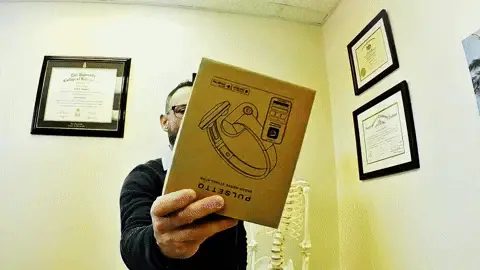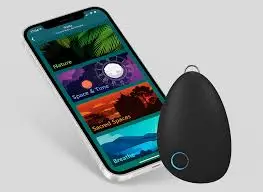Pulsetto Review: Can This Vagus Nerve Stimulator Help with Brain Fog and Detox?

As a physician with extensive experience in mold illness, autoimmune diseases, and health tech, I’m always on the lookout for innovative devices that can offer real benefits to patients struggling with chronic conditions. That’s why I’m eager to test out the Pulsetto, a vagus nerve stimulation (VNS) device that promises to improve brain fog, aid detoxification, and enhance overall well-being.
With my personal and professional focus on brain fog secondary to COVID-19 and insomnia resulting from mold illness, I’ll be using the Pulsetto to evaluate whether it lives up to its claims. In this review, I’ll break down what the company says about its effects on cognitive function and detoxification, explore the science behind vagus nerve stimulation, and share my firsthand experience with the device.
What Is the Pulsetto?
The Pulsetto is a wearable device designed to stimulate the vagus nerve, a critical component of the autonomic nervous system. This nerve plays a key role in regulating inflammation, digestion, heart rate, and brain function. Pulsetto claims that by stimulating the vagus nerve, their device can help with stress reduction, improved sleep, cognitive enhancement, and even detoxification.
Given the increasing research on vagus nerve stimulation as a treatment for various conditions—including depression, epilepsy, and inflammatory diseases—the potential for VNS to alleviate brain fog and promote detoxification is intriguing.
Pulsetto’s Claims on Brain Fog and Detox
Pulsetto’s marketing highlights several benefits, including:
Brain Fog Reduction: By enhancing parasympathetic activity, the device supposedly improves focus, mental clarity, and cognitive processing speed.
Detox Support: Pulsetto suggests that vagus nerve stimulation can help the body eliminate toxins more efficiently by improving liver function, lymphatic drainage, and reducing inflammation.
Better Sleep and Stress Reduction: The device aims to promote relaxation by shifting the autonomic nervous system toward a parasympathetic-dominant state, potentially benefiting those with insomnia.
These claims align with broader research on the vagus nerve’s role in reducing systemic inflammation, which is a key driver of both cognitive dysfunction and detoxification processes. However, how much impact a consumer-grade wearable like Pulsetto can have remains to be seen.
My Plan for Testing the Pulsetto
Since I experience brain fog following COVID-19 and insomnia due to mold exposure, I’ll be using the Pulsetto over the coming weeks to assess its effects. My primary areas of focus will include:
Cognitive Function: Does my mental clarity improve? Do I notice changes in memory recall and focus?
Sleep Quality: Can it help regulate my sleep patterns and improve insomnia caused by mold illness?
Overall Well-Being: Any noticeable changes in fatigue, energy levels, or stress?
I’ll track these parameters and provide objective insights, comparing any changes in cognitive performance, sleep quality, and overall health.
Final Thoughts: Is Pulsetto Worth It?
The Pulsetto is entering a growing field of biohacking and neurostimulation devices that claim to optimize health through non-invasive means. While vagus nerve stimulation has solid scientific backing in medical applications, its effectiveness in addressing brain fog, detox, and insomnia at the consumer level remains an open question.
Stay tuned for my detailed follow-up review, where I’ll share my personal experience with the device, the data I gather, and whether Pulsetto can deliver on its promises for those struggling with brain fog and chronic illness.
Have you tried vagus nerve stimulation or have experience with Pulsetto? Let me know in the comments!
💡 Boost Your Brain & Sleep Naturally! 🧠💤 Try the Pulsetto Vagus Nerve Stimulator & feel the difference! 👉 Click here to check it out https://amzn.to/436rDic ⚡✨
#amazonaffiliate

